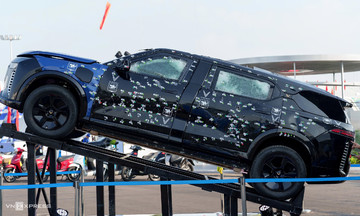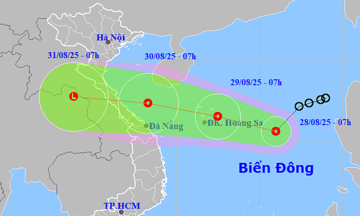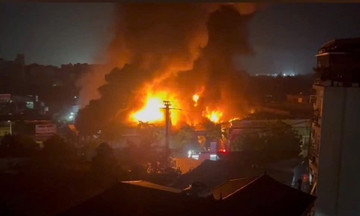Nguyen Van Son, a 40-year-old truck driver from Dong Nai, frequently transports goods from the eastern region to the central provinces. He experiences constant stress driving on the Vinh Hao - Phan Thiet Expressway. He explained that this road has two lanes in each direction, but lacks emergency lanes, creating a high risk of accidents, especially given the 90 km/h speed limit.
"Although the expressway has emergency stopping points, they are 4 to 5 km apart. If a vehicle breaks down mid-journey, it can't always reach a safe stopping area," Son said, adding that drivers are forced to stop in the travel lane, increasing the risk of rear-end collisions, particularly at night.
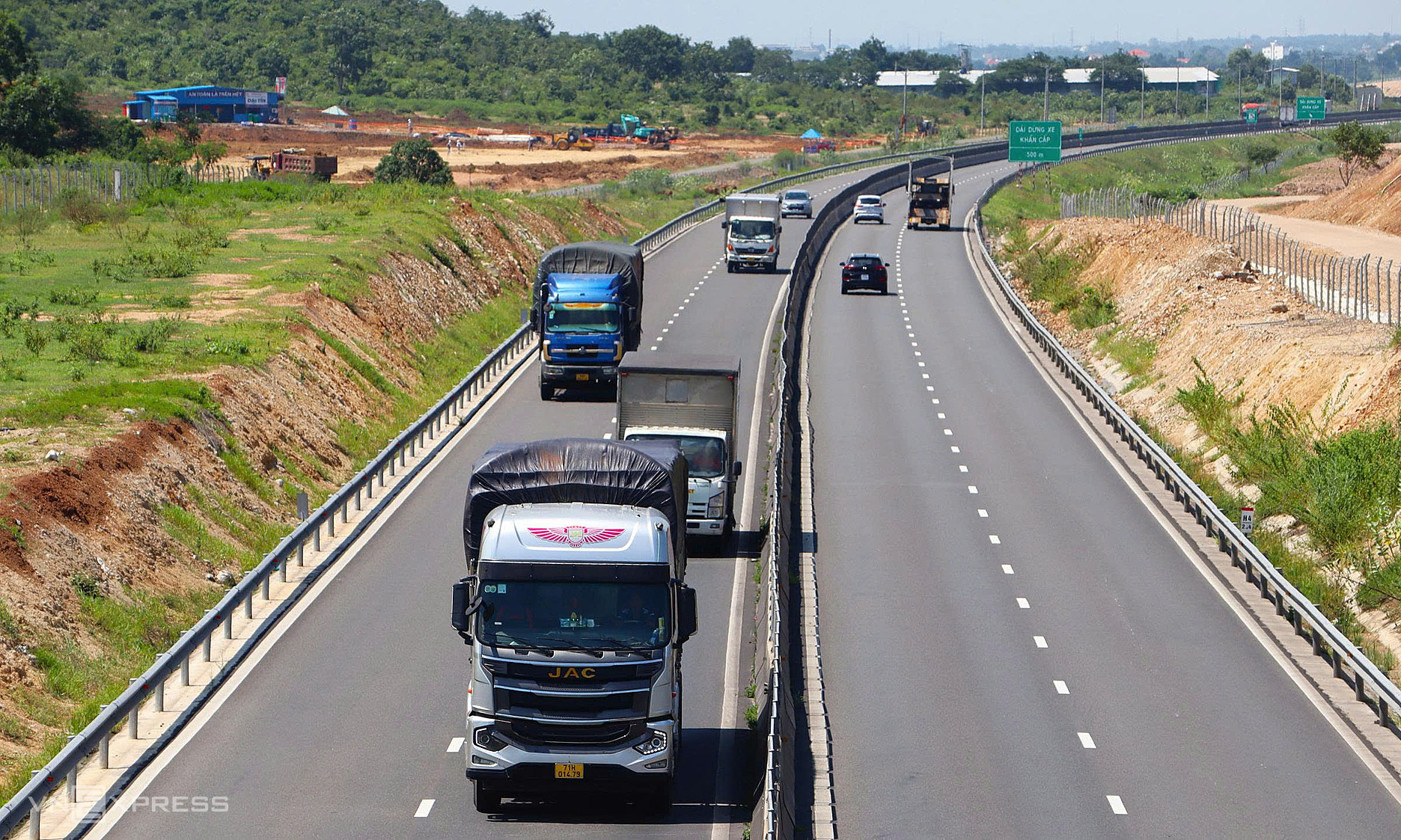 |
Vinh Hao - Phan Thiet Expressway passing through Ham Thuan Bac commune, Lam Dong province. Photo: Viet Quoc |
Vinh Hao - Phan Thiet Expressway passing through Ham Thuan Bac commune, Lam Dong province. Photo: Viet Quoc
The over 100 km Vinh Hao - Phan Thiet Expressway runs through Lam Dong province (formerly Binh Thuan), located on the eastern North-South Expressway, connecting the Dau Giay - Phan Thiet and Cam Lam - Vinh Hao expressways. Since its opening in 5/2023, it has become a vital artery for transport between Ho Chi Minh City, Dong Nai, and the central provinces. Traffic volume has rapidly increased, but due to its phased investment and lack of emergency lanes, the expressway has seen numerous serious accidents.
Most recently, late on 8/7, a passenger bus carrying 41 people traveling on the Vinh Hao - Phan Thiet Expressway from Khanh Hoa to Ho Chi Minh City suffered a tire blowout near Ham Liem commune, Lam Dong province (formerly Binh Thuan), and had to stop. A sleeper bus following behind collided with the stopped vehicle, killing the driver and assistant of the sleeper bus when they exited to inspect the damage. Several passengers on the stopped bus were also injured. Previous accidents have also occurred on this route.
This issue isn't isolated. Several other expressways currently operating with limited 4 lanes and no emergency lanes, such as Trung Luong - My Thuan, Vinh Hao - Cam Lam, and Cam Lam - Nha Trang, also create stress for drivers. Additionally, some routes have only two lanes and lack a median strip, like Cam Lo - La Son and La Son - Tuy Loan, further increasing accident risks. In 2/2024, a collision between a 7-seater car and a container truck on the Cam Lo - La Son Expressway resulted in three fatalities.
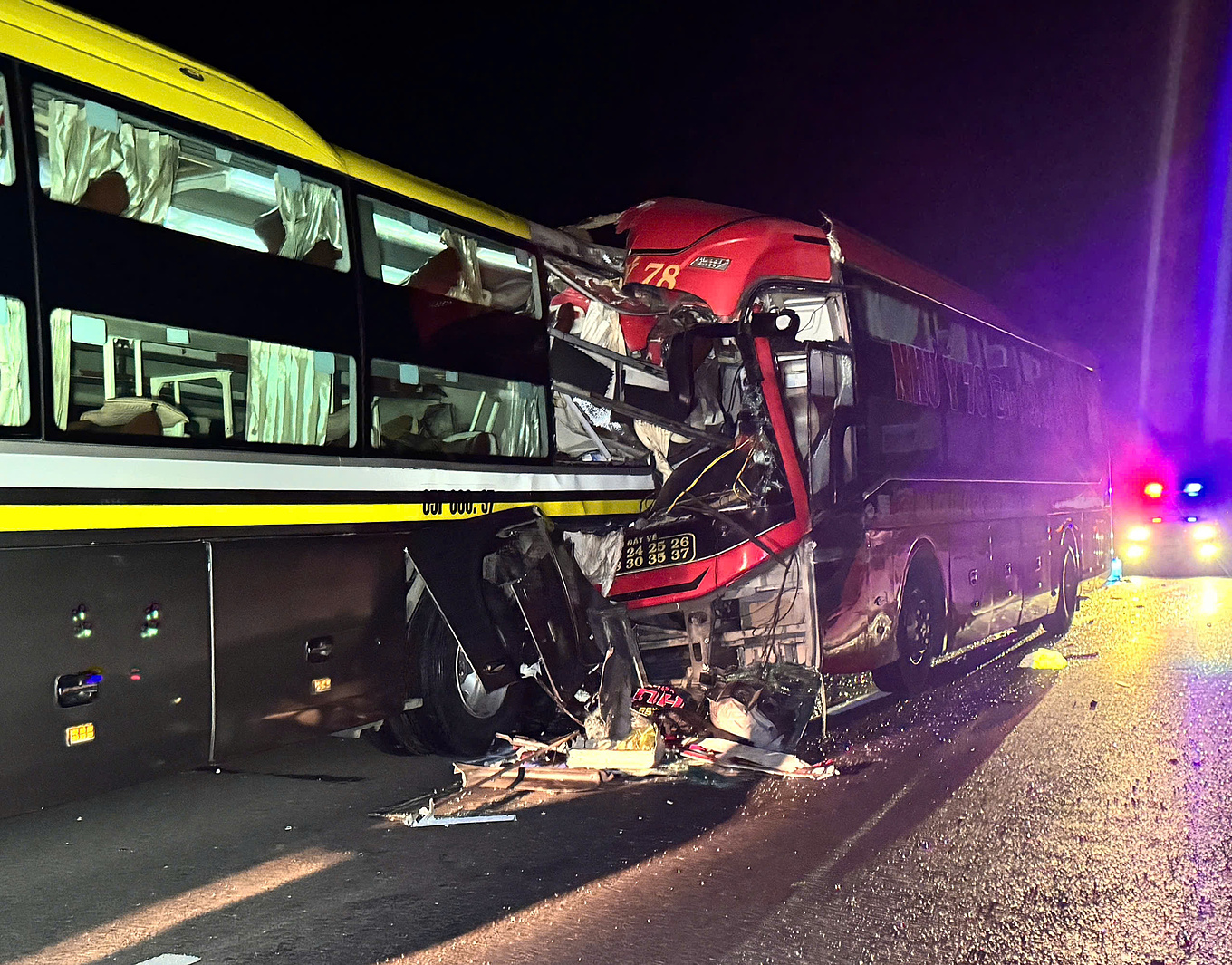 |
The scene of the two-bus collision on the Vinh Hao - Phan Thiet Expressway, late on 8/7. Photo: Nguyen Tu |
The scene of the two-bus collision on the Vinh Hao - Phan Thiet Expressway, late on 8/7. Photo: Nguyen Tu
Huu Khoa, a 50-year-old driver from Lam Dong with nearly 20 years of long-haul experience, notes that the newly opened sections of the North-South Expressway have significantly reduced travel times and distances. However, the narrow sections and lack of emergency lanes require constant vigilance to mitigate risks.
According to Khoa, if a vehicle breaks down and has to stop on the road with limited visibility, such as at night, in fog, or heavy rain, even hazard lights and warning signs may not be sufficient without an emergency lane. Steep slopes and tight curves exacerbate the danger.
"A moment of inattention can have life-threatening consequences," he said, adding that besides accident risks, narrow expressways are prone to traffic jams, making it difficult for rescue services to access accident sites. Drivers are hoping for prompt expansion of these incomplete expressways, including the addition of emergency lanes and rest stops. In the meantime, Khoa suggests increased patrols and stricter enforcement against traffic violations, as reckless driving and speeding contribute significantly to accidents.
A representative from Team 6 (Traffic Police Department), responsible for the Vinh Hao - Phan Thiet Expressway, stated that the unit maintains 24/7 patrols, with shifts changing every eight hours, to monitor, address violations, and ensure safety. Team 6 also collaborates with other forces on specialized operations as planned by the Traffic Police Department. However, the unit acknowledges the shortcomings of expressways without emergency lanes.
To minimize risks, traffic police advise vehicle owners and drivers to equip themselves with safety gear, reflective vests, and warning triangles. "In case of a breakdown, drivers should wear a reflective vest and place a warning triangle 150 meters behind the vehicle to alert oncoming traffic," the Team 6 representative said.
Vietnam currently has over 2,000 km of expressways, of which 654 km belong to 11 component projects on the eastern North-South Expressway's first phase (2017-2020), all opened in recent years. The second phase (2021-2025), spanning approximately 721 km, is underway, with four component projects expected to complete by the end of this year.
Due to funding constraints, many sections were built with only two or four lanes and lack continuous emergency lanes. However, operational issues have prompted the government to direct relevant ministries to explore expansion options, including public-private partnerships (PPPs) following proposals from private companies.
Currently, in addition to the ongoing upgrades of the Cao Bo - Mai Son and Cam Lo - La Son sections, the Ministry of Construction has proposed expanding 15 publicly invested sections of the North-South Expressway from both the 2017-2020 and 2021-2025 phases (excluding BOT projects operated by private companies).
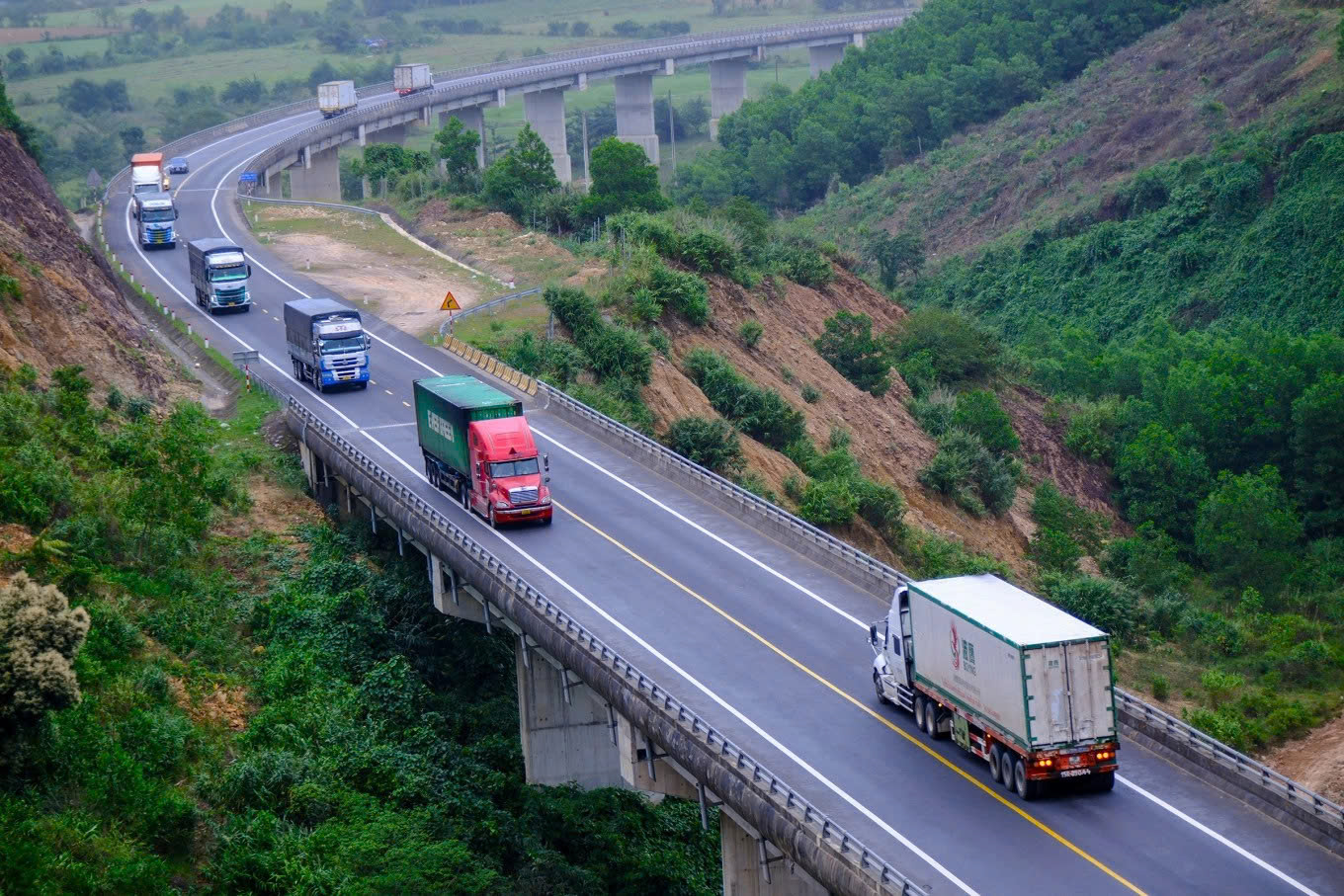 |
The La Son - Tuy Loan Expressway currently has only two lanes. Photo: Nguyen Dong |
The La Son - Tuy Loan Expressway currently has only two lanes. Photo: Nguyen Dong
The ministry has proposed two options: combining all 15 sections into a single project totaling approximately 966 km and costing nearly 128,300 billion VND (excluding interest). This would streamline management and operation but faces challenges due to the substantial investment required and the difficulty in finding investors with sufficient financial capacity. Additionally, due to the varying construction timelines of the existing expressway sections, simultaneous expansion could create legal conflicts related to contractor warranties.
The alternative is to divide the 15 sections into two projects based on geographic location. Project 1, from Mai Son to Cam Lo, would cover approximately 415 km and include eight sections: Mai Son - National Highway 45, National Highway 45 - Nghi Son, Nghi Son - Dien Chau, Bai Vot - Ham Nghi, Ham Nghi - Vung Ang, Vung Ang - Bung, Bung - Van Ninh, and Van Ninh - Cam Lo.
Project 2, from Quang Ngai to Dau Giay, would span 551 km and include seven sections: Quang Ngai - Hoai Nhon, Hoai Nhon - Quy Nhon, Quy Nhon - Chi Thanh, Chi Thanh - Van Phong, Van Phong - Nha Trang, Vinh Hao - Phan Thiet, and Phan Thiet - Dau Giay.
In a recent official document sent to the Ministry of Finance and the Ministry of Construction analyzing these options, the Vietnam Expressway Development Investment Corporation (VEC) assessed option two as more feasible. However, to align with current conditions and resources, VEC proposes a two-phase implementation.
The 2026-2028 phase would prioritize expanding five routes: three from Project 1 (Mai Son to Dien Chau, totaling 156 km) and two from Project 2 (Vinh Hao - Phan Thiet and Phan Thiet - Dau Giay, totaling 200 km). The second phase (planned after 2028) would upgrade the remaining 10 sections after the warranty period expires and traffic volume increases.
VEC proposes to collaborate with the State Capital Investment Corporation (SCIC) and other investors on Project 1. For Project 2, VEC suggests engaging other qualified and experienced investors.
If assigned Project 1, VEC requests to retain its remaining profits from 2025-2030 (approximately 4,769 billion VND) to supplement its equity for project participation. VEC also proposes allowing project investors to collect tolls on previously publicly funded sections after expansion. This would reduce the burden on the state budget.
Viet Quoc - Giang Anh





